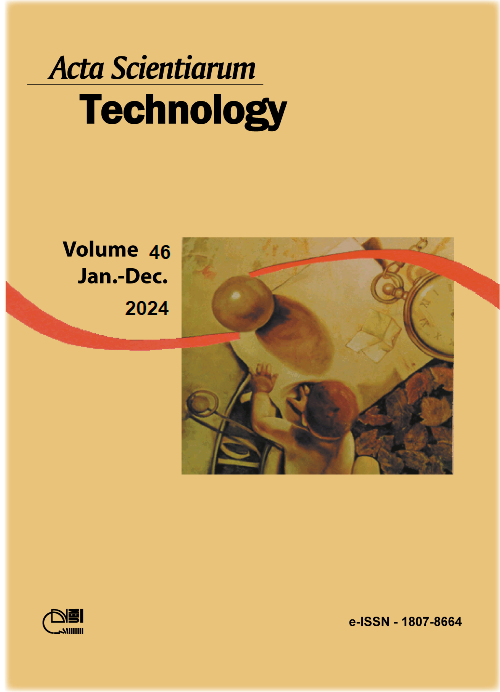Solar Power and Demand Response for Greening Indian Lignite Power Plants: A CO2 Reduction Initiative
DOI:
https://doi.org/10.4025/actascitechnol.v46i1.69511Keywords:
Distributed generation; fossil fuel; power quality; PSO; renewable energy.Abstract
This research paper delves into the prospect of curbing carbon dioxide (CO2) emissions by strategically deploying solar photovoltaic (PV) systems and orchestrating demand response (DR) mechanisms within Indian lignite power plants (LPP). The study responds to the critical imperative of mitigating greenhouse gas (GHG) emissions originating from coal-based electricity generation, a matter of substantial consequence in the context of climate change. In pursuit of optimal solar PV system allocation, this research employs the particle swarm optimization (PSO) technique, considering a spectrum of factors including solar resource availability, electricity demand patterns, and the CO2 intensity associated with coal power generation. The primary objective is to minimize CO2 emissions while maximizing the integration of solar PV and curtailing power losses, all while accounting for the intermittent nature of solar power and the dynamic nature of demand. The proposed approach is rigorously tested on the IEEE 33 bus system, supplied by the LPP. The results convincingly demonstrate a remarkable reduction in CO2 emissions, amounting to 29.69%, following the implementation of the proposed approach. This research presents a concrete step towards a more sustainable and environmentally friendly energy landscape, offering valuable insights for policymakers and stakeholders in the energy sector.
Downloads
Downloads
Published
How to Cite
Issue
Section
License
DECLARATION OF ORIGINALITY AND COPYRIGHTS
I Declare that current article is original and has not been submitted for publication, in part or in whole, to any other national or international journal.
The copyrights belong exclusively to the authors. Published content is licensed under Creative Commons Attribution 4.0 (CC BY 4.0) guidelines, which allows sharing (copy and distribution of the material in any medium or format) and adaptation (remix, transform, and build upon the material) for any purpose, even commercially, under the terms of attribution.
Read this link for further information on how to use CC BY 4.0 properly.











8.png)




